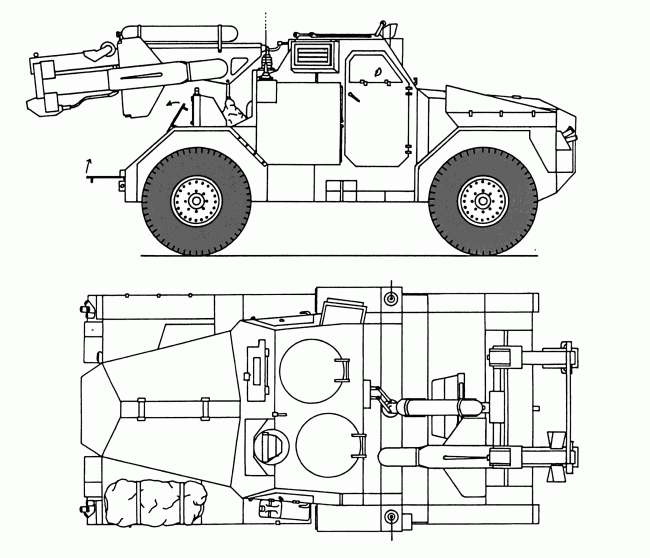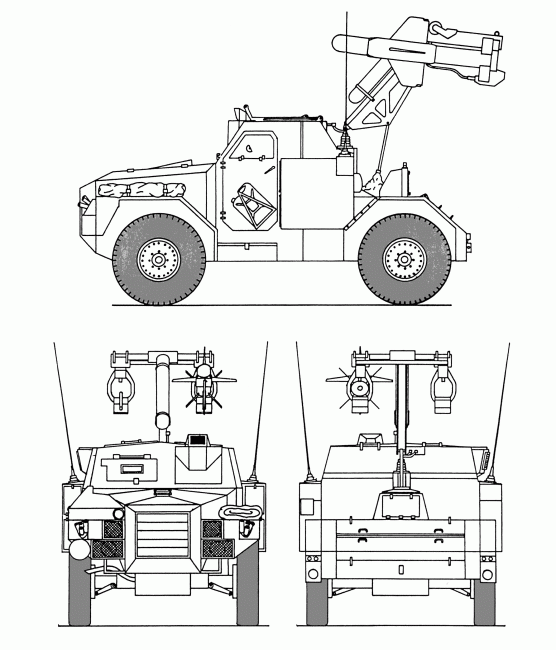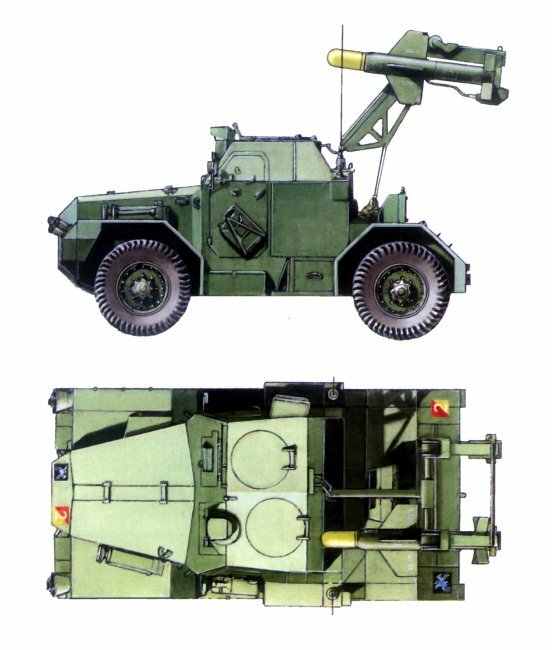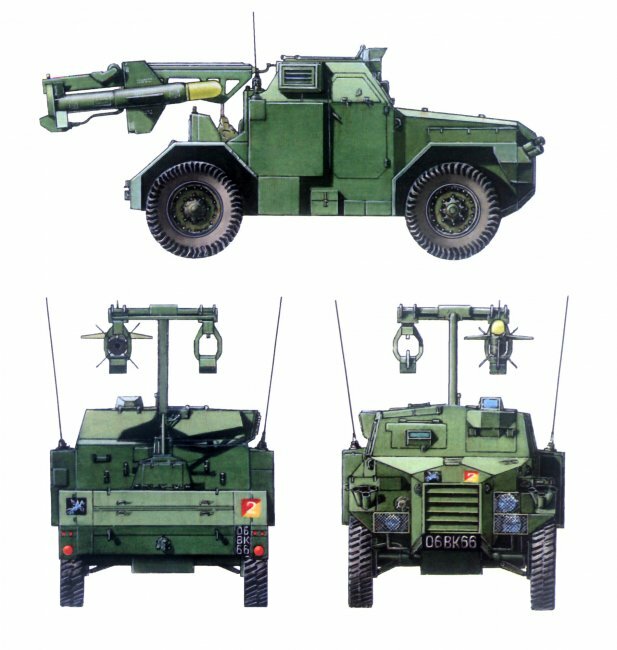Hornet Malkara, anti-tank
A typical representative of this category of combat vehicles is the English Hornet, a symbiosis of the Malkar ATGM launcher and a standard army armored vehicle. The Hornet was in service with the British paratroopers in the 1960-70s.
Armored car assembled on the chassis of the army uniform "Pig" company "Humber". The rear cockpit is replaced with a small platform on which the launcher for the two Malkara missiles is located. The rockets were attached to the guiding beams in an aircraft-like manner - they were suspended from below. The launcher was deployed on 40 degrees in each direction.
The crew had only four shells at their disposal: two in a combat position and a couple more - in containers. In the event that the "Hornet" was to fall to the ground with a parachute, no projectiles were mounted on the beams.
The delivery to the battlefield of anti-tank systems, as well as other airborne vehicles, was carried out by Argus, Belfast and Beverly aircraft - the “workhorses” of the British military transport aviation that time. For parachuting, the armored car was mounted on a standard platform.
The range of the Hornet / Malkar complex was small. So, the Mk.1-type projectile had a range of just 1800 m, and at that maximum distance it flew in 15 seconds. More sophisticated samples had a range of flight to 3000 m. The minimum area of impact was from 450 to 700 m. . Control of the projectile with four swivel rudders was carried out by transmitting commands by wire. Automatics compensated for pointing errors caused by the rotation of the projectile, and the influence of side wind.
The crew of the car consisted of three people: the commander, the driver and the radio operator, and the duties of the operator of the anti-tank complex were assigned to the commander. Likewise, one of two crew members could perform its functions. Workplace commander-operator was to the left of the driver. To control and monitor the flight of the projectile, it was equipped with a periscope turning on 160 °.
The Hornet / Malkara anti-tank missile systems were intended to equip parachute divisions formed as part of the Royal Tank Corps in the 1961-1963. Later, in 1965, these mechanized airborne units became part of the 16 parachute brigade.
In 1976, the brigade was disbanded due to a general reduction in British paratroops. At the same time, the Hornet combat vehicles and the entire range of ATGMs used were decommissioned. They were replaced by the newest Swingfire anti-tank missile system, which uses the MK.5 Ferret as a chassis.
Yes, the Hornet / Malkar system was short-lived. Although the power of the missile warhead was great, its weight was also great, and the flight speed and range left much to be desired. The launcher could not withstand eight rocket launches - repair or replacement of guide beams was required, which went beyond the scope of all regulatory standards.
Very modest ammunition and the complexity of reloading limited the combat capabilities of the complex. And as already mentioned, the “Hornet” with a loaded launcher could not be parachuted, so its combat readiness at the time of landing was zero. But, despite the many flaws, the Hornet / Malkar system became a noticeable milestone in the development of anti-tank missile systems.
General view of the Malkar ATGM launcher on the chassis of the Hornet armored car
Launcher ATGM "Malkar" on the chassis of an armored car "Hornet." Parachute division as part of the Royal Armored Corps. UK, 1963
The Hornet / Malkar prototypes were monochromatic olive in color, the missile warheads were yellow. On the hulls of rockets, between the wings, white operational inscriptions were made.
Standard desert camouflage of serial copies consisted of rather wide vertical wavy stripes of approximately the same width of sand and green colors. The numbers are traditional British, such as 06ВК66 or 09ВК63. The horizontal ones were located on the front right above the headlamp, the vertical ones on the back of the anti-mud panel. Judging by the photos, the side boxes could have a tactical number, for example: “24” in a yellow square.




Information